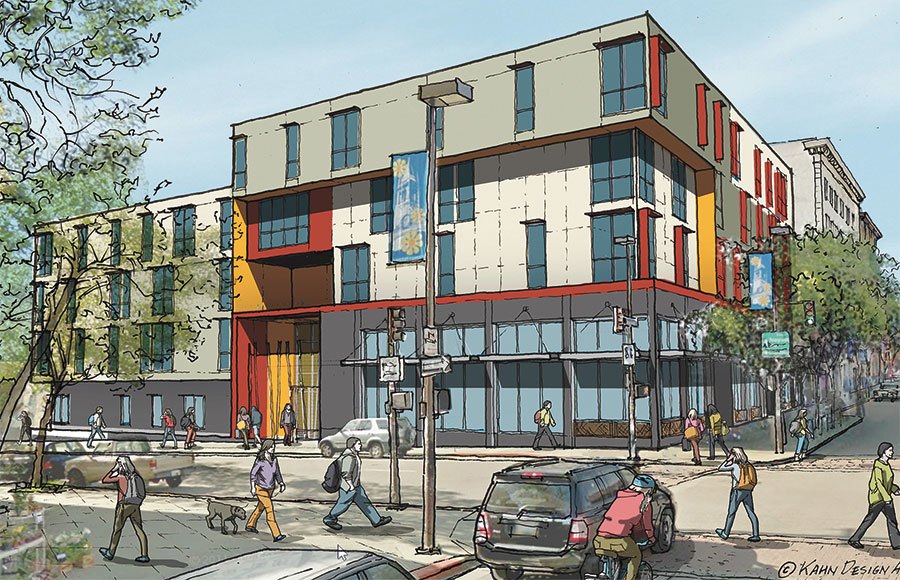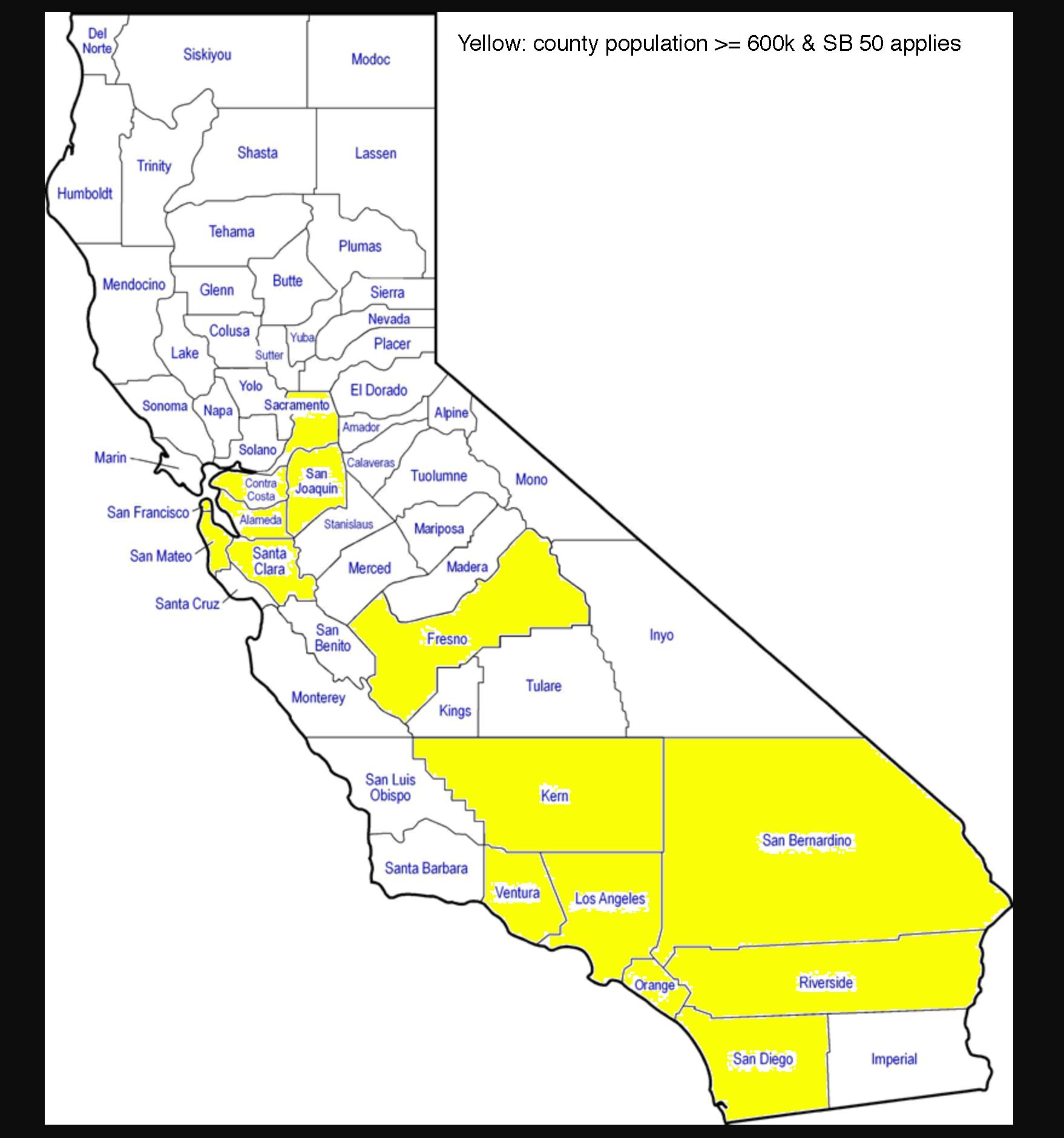
Yesterday was a big day for SB 50 (Wiener), the bill to upzone residential areas near transit and jobs. The bill faced a potentially hostile Senate Governance and Finance Committee, chaired by State Senator Mike McGuire from Sonoma County and author of the rival Senate Bill 4. Despite the treacherous path, the outcome was a decisive win with only one vote against (Sen. Hertzberg of Los Angeles), albeit with significant amendments to the bill.
The new bill language has not been released, but based on the committee discussion and follow-up statements from Sen. Wiener and his office, the amendments essentially appear to do two big things (among other changes):
- Exempt SB 50 from counties with populations less than 600,000, except for cities within those counties with populations over 50,000 that have rail or ferry stops (see the green/purple parts of the flow chart below)
- Legalize “by right” permitting of single-family homes into duplexes, triplexes, and fourplexes across the state, albeit with only minimal demolition of existing structures allowed.
The amendments now make the overall bill relatively complex, but Berkeley-based artist Alfred Twu drew up this handy flow chart to explain how the bill will now work:

For a graphic on the counties now affected, here is a map from Barak Gila with the counties over 600,000 population (in which SB 50 applies) in yellow:

So did Marin County get a carve out, in a deal to merge the bill with county representative McGuire’s SB 4? Notable cities now apparently exempted from SB 50 include the SMART train and ferry stop in Larkspur and the ferry-stop towns of Sausalito and Tiburon. Yet San Rafael and Novato (two SMART train stops) are still covered by SB 50.
What about Sonoma County? Cities with SMART trains that no longer would be under SB 50 jurisdiction include Cotati, Rohnert Park, Cloverdale, Healdsburg, and Windsor. Still included are Petaluma and Santa Rosa.
In Southern California, Santa Barbara County’s Goleta and Carpinteria Amtrak stations also would not be covered by SB 50, while the City of Santa Barbara would still be affected.
Meanwhile, notable other cities with rail or ferry stops within those non-yellow counties, to which SB 50 will still apply, include Vallejo, Fairfield, Vacaville, Roseville, Rocklin, Madera, Modesto, Merced, Davis, Chico, Redding, and Salinas. And of course the remaining yellow counties represent major population and employment centers that could greatly increase housing production with SB 50 upzoning.
On balance, this new population criteria is not a bad compromise, as it means most of the core areas of California that prevent new housing are still affected. But the SMART train line is pretty well decimated by this compromise, as is the Santa Barbara Amtrak line. It’s a relatively small but painful price to pay, given the potential benefits statewide with the remaining areas.
Meanwhile, the fourplex by-right provision could potentially open up significant densification in California everywhere, a la the recent Minneapolis plan to end single-family zoning and allow triplexes city-wide. But could this new SB 50 provision encourage more high-density sprawl, with fourplexes in outlying areas that don’t have access to transit and therefore lead to more traffic and pollution? The original beauty of SB 50 (and its predecessor SB 827) was that it targeted transit neighborhoods to reduce overall driving miles. The fourplex provision could undermine those environmental benefits. Yet since the fourplexes (or other smaller divisions) can only involve minor demolition of existing structures (or building from the ground up on vacant parcels), the deployment may not be as sweeping as it might initially appear.
Overall, SB 50 cleared a major hurdle yesterday before its eventual advancement to the Senate floor, emerging relatively unscathed and with some potentially major new additions. If it passes that chamber, it will be on to the Assembly, with further carve-outs and compromises likely.


